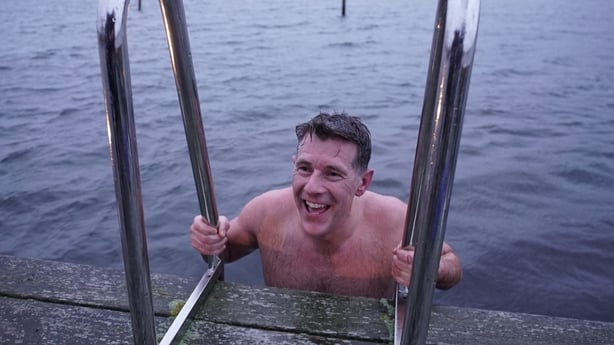Dermot arrives in Swedish Lapland in the depths of winter. Straightaway, he has to get to grips with the darkness as, in the far North, the sun doesn’t set at all in June and there is darkness around the clock in January.
Dermot quickly discovers that rather than fighting against the darkness and the weather, Swedish design embraces them…and the results are enlightening.
First stop is Loggers Lodge, an original timber cabin from 1942. Back then, it housed up to 16 loggers in bunk beds, who cooked and kept warm by its oversized central fireplace. Lying vacant for many years, it was recently renovated and transformed into an eco- getaway, offering guests zero light pollution and uninterrupted views of the Northern lights.

The next day, Dermot travels to The Tree Hotel, which is comprised of seven tree-houses, each one is designed by a different world-famous architect. Dermot sleeps in the 7th Room, designed by Norwegian architects, Snøhetta, – who also designed the Norwegian Opera House.
The room covers 100 sqm of construction space, of which 75 sqm is living space. The beds and seating are dropped 300mm down to offer uninterrupted views. The entire underside (6th Façade) is a life-size photo of the treetops as they looked before the room was put in place.
No trip would be complete without a trip to the capital for some culture so Dermot heads for The Royal Palace in Stockholm, built in 1697.
From one of the oldest buildings to the newest kid on the block. It’s off to ‘79&Park’, designed by world-renowned Danish architect, Bjarke Ingels. This is Ingels first Swedish commission- a daring design of 169 apartments ranging in price from €300k to €1.8m.

Next up is the 'Rock House'. Set on the edge of a severe hillside, it looks straight over the cliff face and down 15 metres into Lake Mälaren, it was designed by architect Håkan Widjedal of Arkitektstudio Widjedal Racki.
His challenge was to find a flat area to build on while retaining the ‘marvel’ of the location both inside and out. The solution was to put the house on the edge of the cliff-shelf and leave the spot where the old house had been positioned free to provide shelter.
Large sliding doors and a series of steps have been added to the front allow you to sit on the back step for maximum shelter. The veranda, facing towards the lake, has a recessed balcony with a roof overhead so it is like a pocket, using the building to protect you from the wind.

Located on an island, Sommarhus is surrounded by forest and sea. Managing these qualities was central to the design in order to provide the best outlook on the water and the unspoiled nature surrounding it.
Åsa Kallstenius from KOD Architecture describes Sommerhus as ‘Scandinavian holiday home meets Japanese simplicity’.
Dermot’s final stop is 'Villa at Amundon' in Gothenberg. It was designed by Gert Wingårdh who is considered Sweden’s most renowned living architect having designed many of Sweden’s most important buildings.
Built in 2000 for a private client, the property was then bought by Plastic Surgeon Dr. Fredrik Berne in 2015 as a home for himself and his three children.
The house has a humble, low-key approach between two giant granite boulders. All you can see is the entrance door and a small portion of the building. It gives no hint of what is beyond. The entrance brings you straight down the stairs to the open plan area and the rear windows looking out to the sea. The glass ceiling that runs the full length of the back of the house extends out over the back. It is completely horizontal with no inclination at all.
Watch Dermot Bannon's Incredible Homes every Sunday on RTÉ One at 9:30pm.

